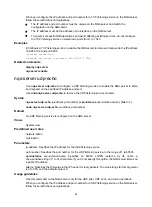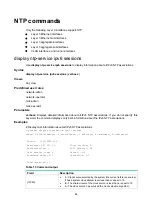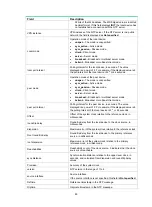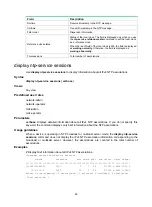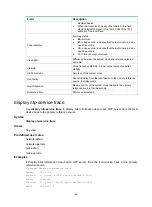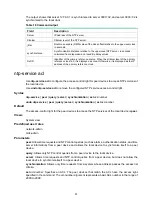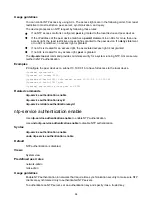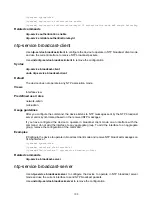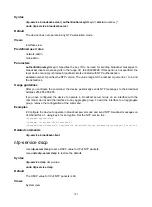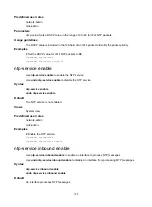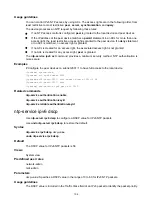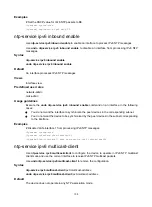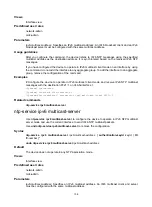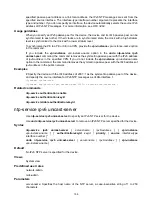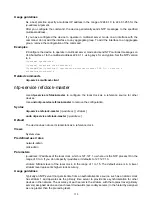
98
Usage guidelines
You can control NTP access by using ACL. The access rights are in the following order, from least
restrictive to most restrictive: peer, server, synchronization, and query.
The device processes an NTP request by following these rules:
•
If no NTP access control is configured,
peer
is granted to the local device and peer devices.
•
If the IP address of the peer device matches a
permit
statement in an ACL for more than one
access right, the least restrictive access right is granted to the peer device. If a
deny
statement
or no ACL is matched, no access right is granted.
•
If no ACL is created for an access right, the associated access right is not granted.
•
If no ACL is created for any access right,
peer
is granted.
The
ntp-service acl
command provides minimal security for a system running NTP. A more secure
method is NTP authentication.
Examples
# Configure the peer devices on subnet 10.10.0.0/16 to have full access to the local device.
<Sysname> system-view
[Sysname] acl number 2001
[Sysname-acl-basic-2001] rule permit source 10.10.0.0 0.0.255.255
[Sysname-acl-basic-2001] quit
[Sysname] ntp-service access peer acl 2001
Related commands
ntp-service authentication enable
ntp-service authentication-keyid
ntp-service reliable authentication-keyid
ntp-service authentication enable
Use
ntp-service authentication enable
to enable NTP authentication.
Use
undo ntp-service authentication enable
to disable NTP authentication.
Syntax
ntp-service authentication enable
undo ntp-service authentication enable
Default
NTP authentication is disabled.
Views
System view
Predefined user roles
network-admin
mdc-admin
Usage guidelines
Enable NTP authentication in networks that require time synchronization security to make sure NTP
clients are synchronized only to authenticated NTP servers.
To authenticate an NTP server, set an authentication key and specify it as a trusted key.

